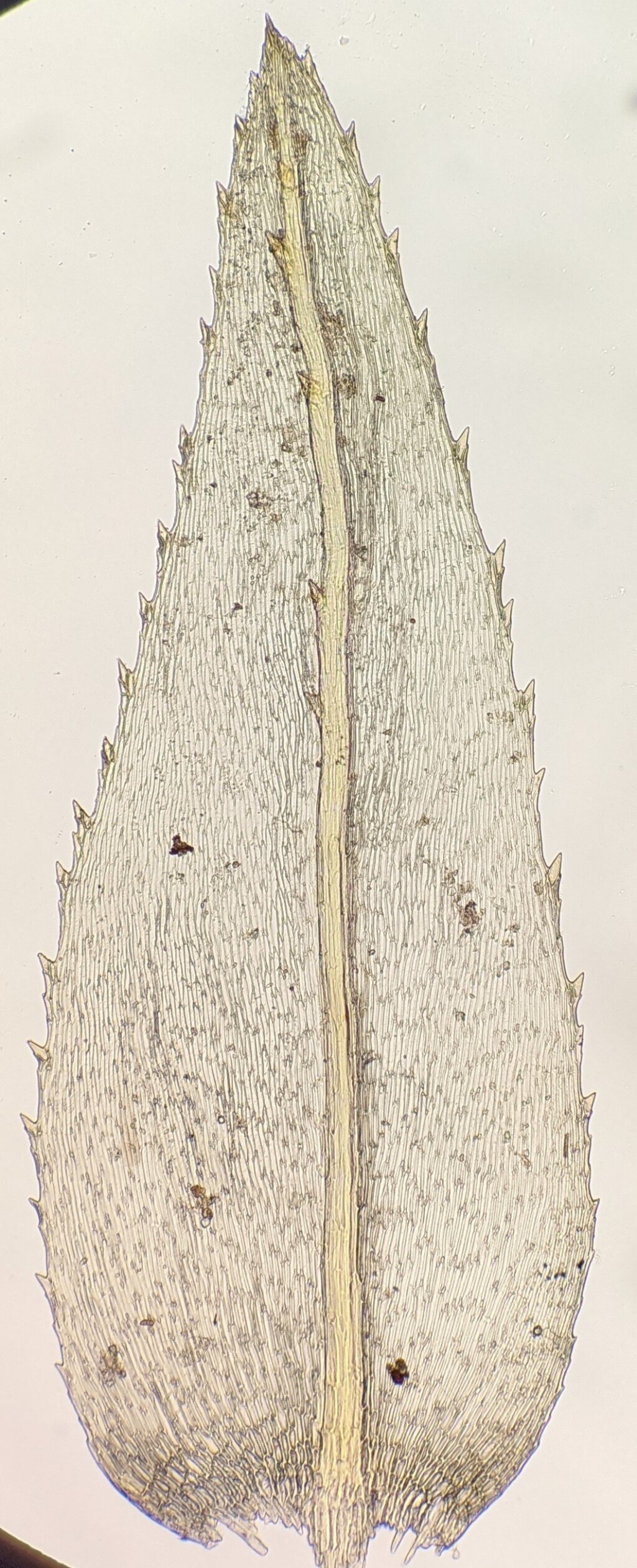Hypnodendraceae
Dioicous. Asexual propagules absent. Stems rigid, projecting from the substrate, strongly tomentose, at least at base, unbranched (not in Victoria), sparingly branched (not in Victoria), irregularly pinnate (not in Victoria) or differentiated into a basal unbranched stipe section and a more distal, branched, pinnate, palmate or umbellate frond section; paraphyllia absent; pseudoparaphyllia absent (not in Victoria) or foliose and spreading or appressed; central strand present. Stem and branch leaves differentiated or not (not in Victoria); costa subpercurrent to long-excurrent; margins entire to serrate or spinose (not in Victoria), occasionally with paired teeth, unistratose, bistratose or pluristratose (not in Victoria), without a border or with a distinct border (not in Victoria) of more elongated, shorter or thicker walled cells; laminal cells mostly linear or elongated, rarely isodiametric (not in Victoria), smooth or prorate; alar cells not differentiated or differentiated and enlarged, hexagonal to rectangular, often with orange walls. Stem or stipe leaves appressed to spreading, hardly altered or slightly flexuose when dry, facing all directions around stem. Branch leaves isomorphic or dimorphic, complanate or not, erect-spreading or falcate-secund, hardly altered or slightly flexuose when dry; apex acute to acuminate, rarely subulate (not in Victoria). Pleurocarpous. Calyptra cucullate, smooth, glabrous. Capsules exserted or immersed to emergent (not in Victoria), costate to sulcate or not (not in Victoria). Operculum conic (not in Victoria), apiculate (not in Victoria) or rostrate. Peristome double or single (not in Victoria); exostome of 16 entire teeth; endostome of 16 cleft processes, sometimes absent (not in Victoria); cilia present or absent (not in Victoria).
Eight genera and around 38 species shared between the Ryuku Islands, south-east Asia, Malesia, Australia, the Pacific Islands and southern South America; two genera in Victoria.
The circumscription of the Hypnodendraceae has undergone drastic rearrangement in response to phylogenetic analyses of chloroplast and mitochondria DNA sequence datasets (Bell & Newton 2005; Bell et al. 2007). Two of the species that were formerly treated as a section of Hypnodendron (Touw 1971) were found to belong to the Pterobryellaceae, Braithwaitea was removed from Hypnodendraceae and placed in its own family, and the Spiridentaceae and Cyrtopodaceae were synonymised with the Hypnodendraceae as they are likely to be closer related to Hypnodendron than several other genera that were formerly included in Hypnodendron (Bell et al. 2007).
 Spinning
SpinningBell, N.E.; Newton, A.E. (2005). The paraphyly of Hypnodendron and the phylogeny of related non-Hypnanaean pleurocarpous mosses inferred from chloroplast and mitochondrial sequence data. Systematic Botany 30: 34–51.
Bell, N.E.; Quandt, D.; O’Brien, T.J.; Newton, A.E. (2007). Taxonomy and phylogeny in the earliest diverging pleurocarps: square holes and bifurcating pegs. The Bryologist 110: 533–560.
Touw, A. (1971). A taxonomic revision of the Hypnodendraceae (Musci). Blumea 19: 211–354.
Touw, A. (2012). Australian Mosses Online. 22. Hypnodendraceae. http://www.anbg.gov.au/abrs/Mosses_online/Hypnodendraceae.pdf (2012).


